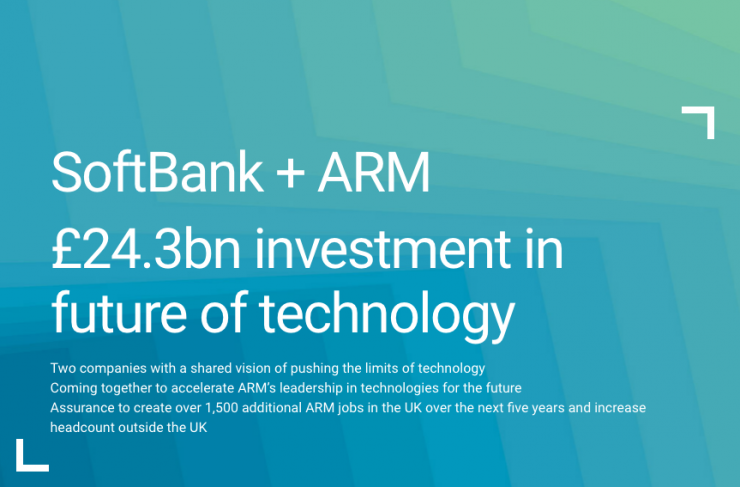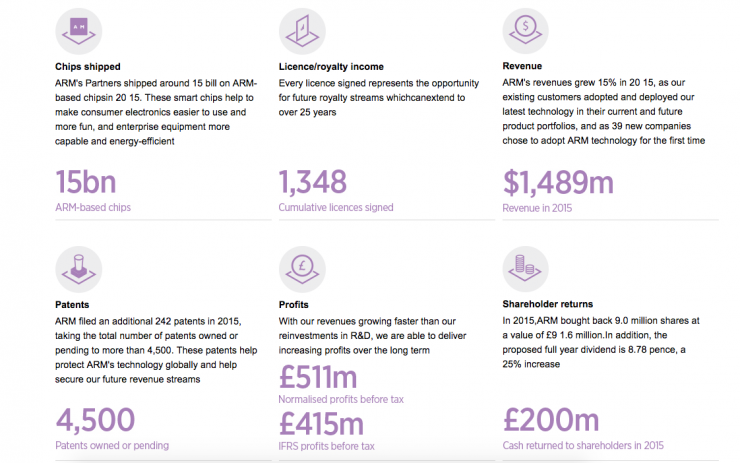
On July 18, 2016, the United States’ Wall Street Journal and Britain’s “Financial Times†issued the first news that Softbank wanted to acquire ARM. By midday, most of the employees of technology companies got out of Monday's meeting and the news began to spread on social networks. In the middle, I opened a page of Twitter, hot words have been prompted "ARM + Softbank". After a while, the number of unread tweets has changed from more than 100 to more than 2,000.
The comments on the day of social networking were first appreciated by technology practitioners and investors on Softbank’s “selling and betting on the futureâ€; by the evening and nearing the end of the evening, Softbank and ARM officials confirmed to the media the fact of the takeover bid; Semiconductor industry practitioners carefully forwarded this message after issuing a statement on the ARM website. Compared with the simple and crude "like" and "cattle" of the masses, the stakeholders involved in them felt more deeply the advent of "gamble" and "storm."
On November 27 last year, ARM had just passed its 25th anniversary - it had established a technology symbiotic business model with a computing architecture IP license for a long time. The core ARM technology serves almost all semiconductor manufacturers. Prior to this analysis of ARM's acquisition was common, but ARM's business model has determined that people do not believe it will be acquired.
Now in the industry, as if the balance of many years of symbiosis in the natural environment was disturbed all of a sudden. Some people are astonished by the powerful external capital forces. Some people will wait and see if they are uneasy. The existing balance will be broken.
Absolutely neutral ARM
In 1990, ARM was independently split into a company (Advanced RISC Machines Ltd.) as the design department of Acorn Computer. Independence and service have been in ARM's genes since the beginning. In the first few years of its establishment, Apple made the earliest Newton PDA using the ARM6-based ARM610. In the same period, GEC Plessey, Cirrus Logic, TI, DEC, and Nokia successively cooperated with ARM or obtained authorization to develop ARM-based chips and products.
The core product line of ARM today includes the Cortex series of processors and the Mail series of graphics processors. In addition, there are several physical IP, system IP, wireless IP, development tools, security, and Internet of Things solutions. The support behind it is over. 4500 patents in communications and computing. ARM opens R & D results to all semiconductor companies through the form of authorization + royalty. Further, ARM technology licensing is divided into the following depths:
Kernel-level authorization (IP core authorization); IC design company obtains soft core or hard core authorization, collaborates with peripheral IP on the basis of CPU, GPU, etc., and packages it into its own SoC; this is very common in chip companies.
Architecture-level authorization (instruction set authorization) refers to the ability to substantially modify the ARM architecture to design its own microarchitecture. In the industry, the only companies with this level of development capability are Apple, Qualcomm, Samsung, and Huawei.
ARM has invested heavily in developing processors, physical IP, tools, and software while sharing it with multiple vendors in a manner that is neutrally authorized, so its development costs are highly diluted. At the same time, because of the connection of software, standards, processes, manufacturing, and other links around ARM, they together constitute the ecology of ARM.
Any company that does not need to acquire ARM will be able to use ARM's technology; and if one day a company in the industry chain wants to buy ARM, it will certainly break the existing multi-end competition balance.
These two sentences sum up to sum up ARM's past core positions.
After Softbank officially launched the acquisition, a number of chip industry sources told Lei Feng: Their biggest concern is that ARM's IP licensing business has changed, and several of them, including Apple, Qualcomm, Samsung, and Huawei, will suffer the greatest possible impact. All of them are building their own computing architecture based on the ARM architecture. The development cycle of one of ARM's major IPs is 2-3 years. Even if ARM guarantees that the business model will not change in the next five years, it will only be the time of 2 generations of products.
At the same time, there is news that after the announcement of the acquisition of Softbank, Apple has joined the team bidding for ARM.
In Softco's offer to acquire ARM, there are three important commitments: premium acquisitions, expansion of personnel, retention of senior management teams, and existing business models. As of the end of fiscal year 2015, ARM has a total of 1348 active technology licenses. SoftBank's third promise indicates that these customers can still enjoy the same benefits in the future. So what did Softbank's capital injection change?
ARM will continue to increase the number of employees worldwide. The most important thing is to double the total number of employees in the UK in the next five years. Looking at the company's 2015 financial report, it is not difficult to find that ARM had 1,577 people in the United Kingdom this year, but in the region where the number of employees exceeds one-third of the company's total, the company’s revenue contribution for the year was only 1% of the company’s total (ARM’s total number of employees in FY2015. Nearly 4,000 people). ARM UK is a research and development center. At the same time, the financial report also revealed that there is a Blue Sky Program within the company. In fiscal year 2015, they deployed 488 engineers to R&D for products that have never been involved in ARM.
ARM CEO Simon Segars said in the dialogue on the night of the acquisition announcement: "Softbank's investment will help ARM to develop future technologies that serve more fields in a faster pace, which is difficult for ARM as an independent company." In the conversation, Segars specifically mentioned IoT and self-driving cars.
ARM's current core strengths remain in mobile devices. Segars said, “In addition to the larger investment scale, these new areas also require ARM to be able to integrate a larger number of industry partners that are completely different from the past. After completing R&D and integration, ARM will continue the past model to its partners. Provide the technical elements needed for new product development."
ARM's future variables are that it is not only to defeat Intel's rivals in mobile terminals, but also hopes to help the existing ARM camp to deploy smart drivers and unmanned vehicles to lead the development of new areas. It can be seen that the current ARM camp manufacturers continue to focus their efforts on the main battlefield of mobile devices. In addition to such big investors as Nvidia, they can talk about serious investment in the automotive and other fields.
However, the possible risk is that when the softbank as an industrial investor enters, ARM's future ecological integration will be as easy as it used to be. It also does not rule out that if necessary, ARM will have a higher degree of integration.

Softbank’s acquisition of ARM was £24.3 billion, which represented a $32 billion discount. It exceeded Softbank's acquisition of Sprint's $21.6 billion in 2013. Compared with Qualcomm and Intel, Qualcomm has more than 30,000 employees, a market value of 88 billion US dollars, and annual revenue of 25.3 billion US dollars; and Intel close to 100,000 people, last year, revenue of 55.4 billion US dollars; both a market value refers to 88 billion US dollars , a 160 billion US dollars. ARM is based on 4,000 people, and the annual revenue of 150 million US dollars has shaken the 32 billion valuation.
At present, the world has cumulatively issued about 90 billion chips with ARM architecture. In 2015, there were 15 billion chips, but Simon Segars said that 900 billion chips are still just fur.
High-level executives of two semiconductor industry companies in China told Lei Fengwang (search for "Lei Feng Net" public concern) : At this time, ARM's sales are not only considering the need for substantial investment in future research and development, but also satisfied with the premium for the acquisition . As a company that has been established for more than 25 years, ARM's operations are highly professionalized, emphasizing accountability to shareholders. Softbank’s acquisition offer is approximately 40% premium to ARM's share price.
If ARM is sold, it is necessary to choose a company with a global perspective and operational capability that is as neutral as possible in the semiconductor industry. There are not many such buyers for ARM. If the British government did not intervene, even if Apple came forward, ARM will almost certainly join Softbank.
